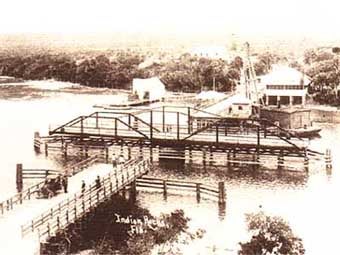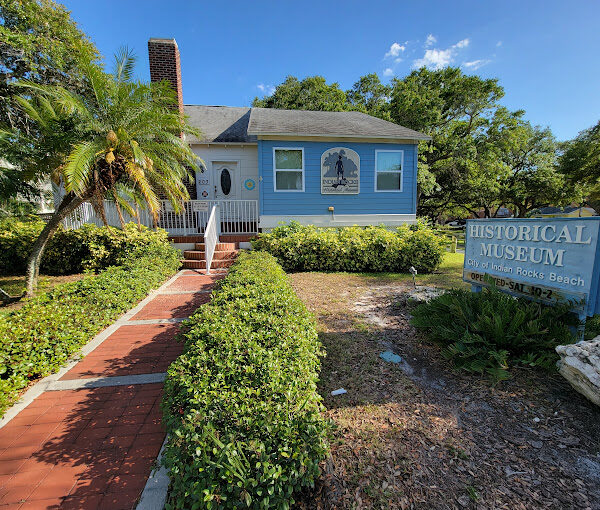
While the cities of Tampa and St. Petersburg were settled in the 1800s, the beaches didn’t even have a bridge until almost 1920. For Indian Rocks, things started to pick up around the latter part of the 1800s. A group from Cedar Key, Florida, explored the area that became Indian Rocks and found a few settlers along the beach. The Hendrick family, according to a 1925 newspaper account, landed in the area in 1883 and had homesteaded there. A settlement, named Anona, has existed in the vicinity (on the mainland) since the mid-1800s. With the opening of a road from the waterway to Largo, the Indian Rocks area became a favorite spot for picnickers.
Indian Rocks was among the first coastal settlements in Tampa Bay. (The origin of its name is unknown. “Beach” wasn’t added to it until the end in 1949.) Visitors were ferried across the bay to the beach, arriving by train from Tampa. The first bridge from the mainland to the beach was completed in 1916. It swung open with a giant key, allowing boats to pass through. A historical plaque marks its location in the “Narrows.” Among other early landmarks were the Indian Rocks Sundries, the Indian Beach Hotel and a railroad spur crossing the bay.
While the community grew and developed during its early days, growth started to accelerate rapidly in 1945, after World War II. But by the time the motel boom hit in the 1950s, Indian Rocks had little available land left. Therefore, it retained much of its original cottage character. In the 1970s, some of those cottages made way for condominiums. (You can find much more information at the Indian Rocks Historical Museum, along with hundreds of photos from years past.)
Today, Indian Rocks Beach is a thriving community that has maintained much of its original character. It supports a lively mix of recreational activities, small businesses, and friendly neighborhoods. Enjoy paradise!
Along with being a laid back beach town focused on outdoor fun, Indian Rocks Beach has a mind-expanding menu that allows visitors to delve deeper into its past and present.



